Menu
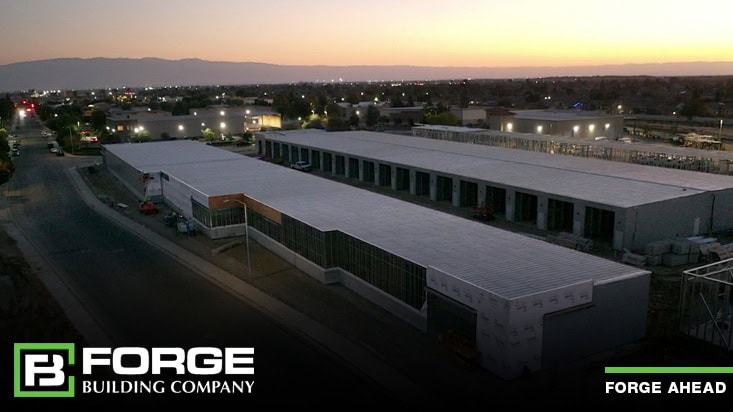
Optimized Unit Mix & Market-Driven Design is the process of aligning your facility’s layout and unit sizes with real-world market demand, site conditions, and long-term investment goals. It goes beyond simply maximizing rentable square footage; it’s about designing a space that reflects how people in your market actually use storage. This approach ensures the right mix of unit types, optimal traffic flow, and long-term flexibility, all of which directly impact occupancy, tenant satisfaction, and return on investment.
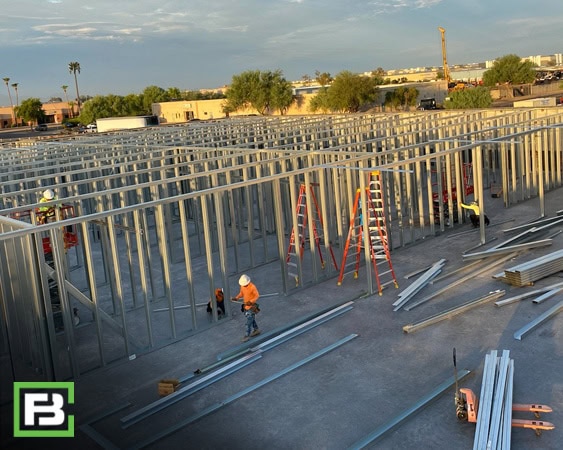 At Forge Building Company, we believe great buildings start with great design and that begins with a strategic, market-driven approach to unit mix and layout planning. For Forge Building Company, planning is the bedrock of our operations. We understand that the success of your construction project relies on thoughtful layout considerations and comprehensive site analysis. Using our team of experts, we specialize in crafting strategic site plans that optimize space utilization, maximize unit mix, and enhance efficiency. This ensures your facility is carefully tailored to maximize your return on investment.
At Forge Building Company, we believe great buildings start with great design and that begins with a strategic, market-driven approach to unit mix and layout planning. For Forge Building Company, planning is the bedrock of our operations. We understand that the success of your construction project relies on thoughtful layout considerations and comprehensive site analysis. Using our team of experts, we specialize in crafting strategic site plans that optimize space utilization, maximize unit mix, and enhance efficiency. This ensures your facility is carefully tailored to maximize your return on investment.
Modern self storage isn’t one-size-fits-all. More and more developers are combining multiple storage types in one facility to meet a broader range of needs. At Forge, we make that possible. Whether you’re in the planning stages of developing your first self storage facility from the ground up, have purchased an existing facility and want to upgrade, are developing RV and boat storage condos, or are expanding your current site, Forge will help you design an optimized site layout and unit mix that maximizes space, enhances tenant experience, and deliver long-term ROI, ensuring long-term performance. When you work with the steel building experts at Forge, you gain a team of experts that specializes in custom-tailored solutions built for today’s market and tomorrow’s.
Effective communication is crucial in the realm of successful project planning and execution. Thus, we prioritize open lines of communication with our clients, subcontractors, and other stakeholders throughout every stage of the construction process. Regular meetings, progress reports, and collaborative workshops ensure that everyone remains informed, engaged, and aligned toward the common goal of project success.
By fostering a culture of collaboration and transparency, we create an environment where ideas are shared, challenges are addressed, and solutions are implemented swiftly. This proactive approach not only minimizes disruptions but also accelerates project timelines, ultimately delivering superior results that exceed expectations.
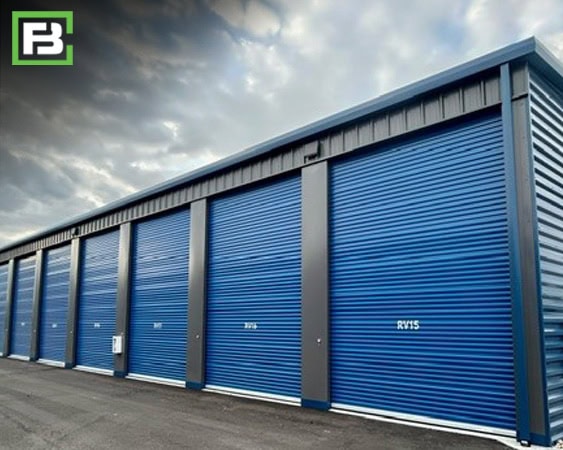 Not all storage units are created equal. The right combination of unit sizes directly impacts occupancy rates, tenant retention, and revenue per square foot. An undersupplied unit size in your market can lead to missed opportunities, while an overabundance of the wrong sizes can leave you with underutilized space and lower returns.
Not all storage units are created equal. The right combination of unit sizes directly impacts occupancy rates, tenant retention, and revenue per square foot. An undersupplied unit size in your market can lead to missed opportunities, while an overabundance of the wrong sizes can leave you with underutilized space and lower returns.
That’s where Forge comes in. Our team uses real market data, demand studies, and decades of experience to help you design a facility that aligns with your location’s demographics, competition, and growth trends. We guide you in creating a balanced mix of small, medium, and large units or specialty units like boat and RV storage or flex space to serve both short-term needs and long-term investment goals.
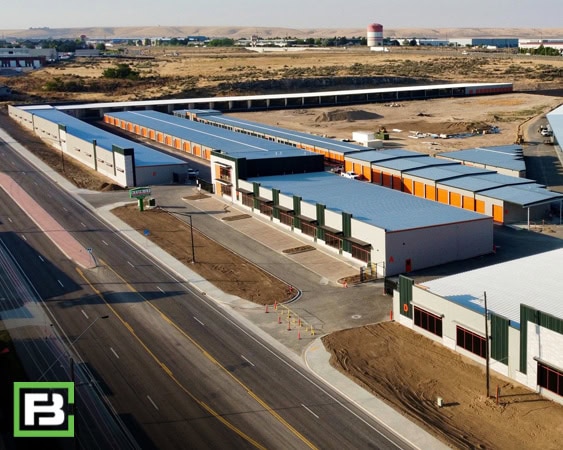 Optimizing your layout isn’t just about fitting the most rentable square footage on a site. It’s about smart design that considers:
Optimizing your layout isn’t just about fitting the most rentable square footage on a site. It’s about smart design that considers:
Our team works hand-in-hand with developers, owners, and general contractors to design layouts that improve tenant experience, reduce operational headaches, and drive maximum value. These principles are especially powerful when applied through flexible, scalable steel building systems, which allow for efficient construction while preserving long-term adaptability.
When you partner with Forge, you’re getting more than a steel building, you’re getting a strategic partner. We bring insight to the design phase, ensuring your plans are both feasible and cost-effective. That means fewer revisions, shorter construction timelines, and a facility that performs from day one.
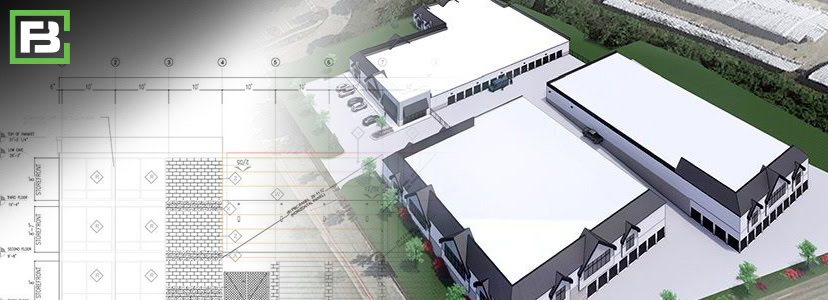
Whether you’re entering a new market or expanding an existing portfolio, Forge is here to help you design smarter and build better. Check out our building types, then let’s turn your vision into a facility that delivers for years to come.
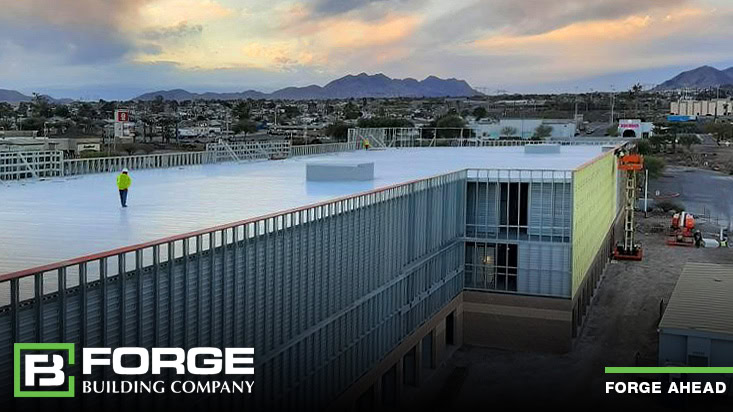
The self storage industry which has experienced remarkable growth in past years and continues to evolve. Following many years of pandemic-driven demand, the self storage industry is now entering a period of adjustment1. Despite the potential obstacles, opportunities for development persist, fueled by technology, customer trends, and strategic innovation. (See our blog, “Is Self Storage a Good Investment for 2025?”)
For savvy investors, opportunities still exist. Self storage businesses must differentiate themselves through storage facility investment. This includes upgrades, improved customer service, and the use of cutting-edge technology, keeping in mind these demand drivers:
Whether building a new facility or upgrading an existing one, so many options exist to help increase profitability. These options range from traditional drive-up units and multi-story facilities to climate-controlled spaces and adaptive reuse projects, such as converting offices or big-box stores into storage units. There’s even a growing market for Pre-Engineered Metal Buildings (PEMBs), flex space, RV/boat canopies, as well as high-end storage condos designed for boats and RVs. With a variety of choices available, investors can select the right storage model and mix based on budget, location, and the needs of the surrounding community.
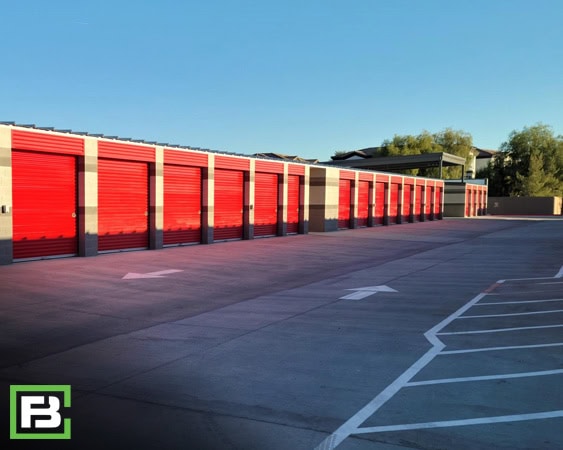 The traditional self storage facility typically offers outside drive-up storage. These warehouse type of units typically charge by the month and provide wide driveways for trucks to unload belongings into individual units. The interior spaces range in dimensions from 400 to 500 square feet.
The traditional self storage facility typically offers outside drive-up storage. These warehouse type of units typically charge by the month and provide wide driveways for trucks to unload belongings into individual units. The interior spaces range in dimensions from 400 to 500 square feet.
This type of facility works well in communities where customers want to store and organize their belongings in a safe, clean place with easy access to their goods. These types of storage units provide the highest level of convenience and work best in a community where people want to load or unload their goods as quickly as possible. They are a great option where land is plentiful enough to create drive-up pathways.
Here is one example of a traditional drive-up facility built by Forge Building Company.
Multi-story self storage is great for when land space is limited. These are also ideal for investors who want to add climate-control options. Some may contain exterior drive-up options for first level, then climate-control options for the upper levels. For an example of a multi-story Forge project, see Kansas Self Storage Building Projects and to learn more on whether building a Multi-Story facility makes sense, see our blog: “When Building a Multi-Story Facility Makes Sense.”
Climate-controlled storage facility investment is a great option in areas of the country that experience extreme heat or cold temperatures and/or that experience high humidity. These units are great for your customers storing furniture, antiques, artwork, and other items where the climate needs to be controlled to avoid moisture buildup and mold prevention.
For more information on whether or not climate-controlled self storage is worth the investment, see our blog titled, “Is Climate-Controlled Self Storage Worth the Investment?” and see an example of a Forge Building Company climate-controlled storage facility build.
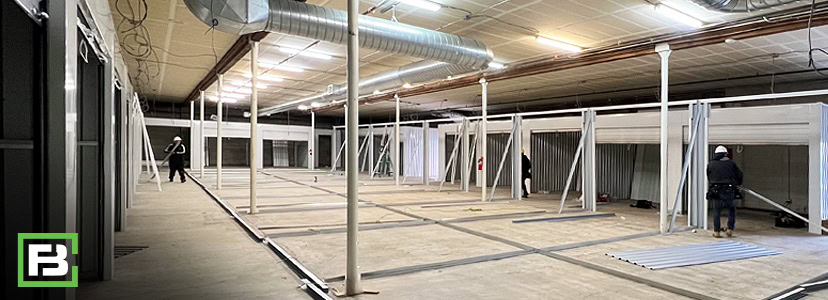
With the decline in big-box retail, there is now a significant inventory of vacant buildings out there for sale. With the current trend of office vacancy rates increasing, building owners are seeking creative ways to make that empty space generate profit again. As such, some are converting these structures into self storage facilities. These buildings can be converted into climate-controlled units or more traditional drive-up units depending upon the building, location, etc.
While this development path can be an efficient time and cost-saver, there are important considerations. These are addressed in our blog titled, “Converting Office and Big-Box Retail Buildings to Self Storage.”
In today’s rapidly evolving landscape of construction and development, the demand for efficient, durable, and cost-effective solutions continues to soar. The pre-engineered metal building (PEMB) is a game-changer in the industry. A pre-engineered metal building system is a building that is constructed with a steel frame system that supports a metal roof and wall panels. They are pre-designed to adhere to precise dimensions in a factory, then the building components are brought to the site in completely knock-down condition (CKD), and finally, they are fixed/jointed at the site and raised with the help of cranes.
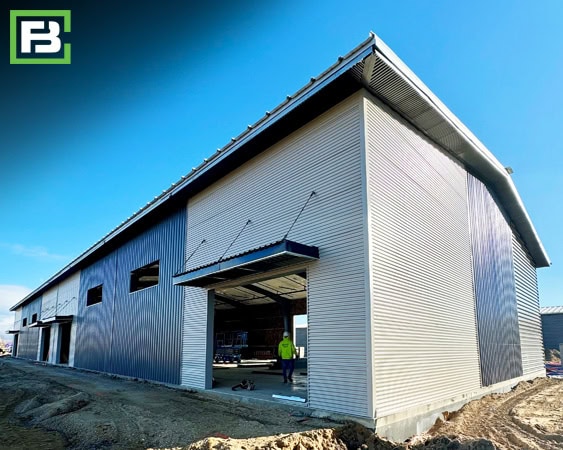 PEMBs have revolutionized the construction landscape across various sectors. These include agriculture, recreational sports facilities, warehouses, aircraft hangers, community centers, storage warehouses, and more. These structures offer a plethora of benefits that make them an ideal choice for developers, investors, and owners. PEMBs are perfect as a stand alone building or as a part of a larger self storage facility.
PEMBs have revolutionized the construction landscape across various sectors. These include agriculture, recreational sports facilities, warehouses, aircraft hangers, community centers, storage warehouses, and more. These structures offer a plethora of benefits that make them an ideal choice for developers, investors, and owners. PEMBs are perfect as a stand alone building or as a part of a larger self storage facility.
See: U-Haul – Overland Road and Condor Barn Breeding Facility for a couple of examples of how PEMBs are being utilized.
For more information, also see “Mixing PEMBs with Standard Self Storage for Maximum Opportunity” and “Pre-Engineered Metal Buildings – An Investment Alternative.”
Flex spaces are becoming increasingly popular among business owners of both offices and storage space. As a business owner, you know exactly how much overhead costs can add up; it’s unfortunate if you don’t need all the space, but for many, that was the only option. That's why so many companies are investing in flex spaces instead of office buildings.
For flex space storage, garage condos can be constructed for commercial applications. An investor might build several garage condos within one large structure and then rent them out to multiple businesses, such as automotive repair shops or a trade workshop. Flex spaces can be used as offices, warehouses, mechanic shops, manufacturing facilities, and so much more.
Americans love to travel and have been purchasing RVs and boats for years. The RV industry alone has seen consistent growth every year since 2009, and the RV Industry Association is predicting shipments of new RVs to be in the mid 300,000s, up from 2024’s shipments2.
There are many factors to indicate that the addition of boat & RV canopies is worth the investment, including local market conditions. Many areas of the country suffer from a lack of vehicle storage or places where boats and RVs can be stored securely. As the sales of RVs and boats increase, the demand to store these vehicles is also likely to grow.
Read about one of our recent boat canopy projects built by Forge for Havasu Riviera Marina.
Unlike the boat & RV canopies, boat & RV condos can not just be rented, but also purchased. These units are fully enclosed. Owners of other types of vehicles, such as collectible and antique cars, motorcycles, and commercial vehicles, may also be in the market for storage condos. Owners of all these vehicle types will not only want a unit for storage, but for maintenance and light repairs as well – a secure place where they can pursue their hobby.
For more information on where this segment of self storage is heading, see our blog, “Where is Boat and RV Storage Headed?” and then check out Luxelocker Storage Condos for an example of one of our storage condo developments.
Choosing the right self storage investment option and the right mix will depend on your location and its market demand. Many Forge customers have a mix of these different types of storage options on their premises. The steel building experts here at Forge Building Company are happy to help you through the entire process. Let’s connect today.
Contributing Editor: Phil Warchol, Forge Building Company
References
1. Dmyterko, A. (2024, November 5). Streams Development. Retrieved from streamsdev.com: https://www.streamsdev.com/post/self-storage-industry-trends-and-outlook-for-2025
2. Fedorick, L. (2025, January 21). Camper Report. Retrieved from camperreport.com: https://camperreport.com/the-year-ahead-rv-predictions-for-top-trends-in-2025
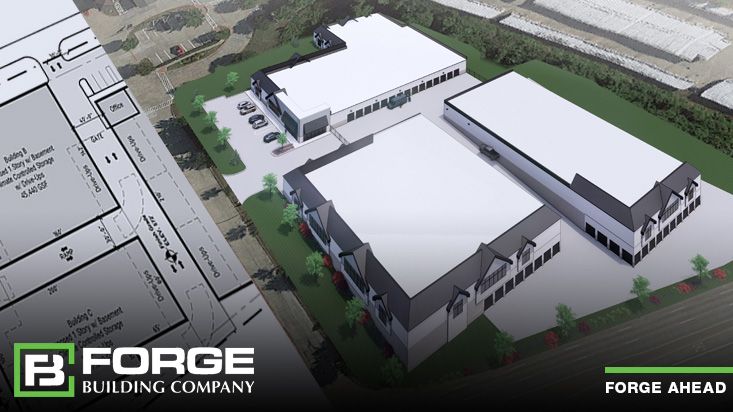
When building a self storage facility, it is easy to get lost in the process. Many people get ahead of themselves and envision the features they want in their facility, or how they want it to look while overlooking one crucial step: the site plan.
Before construction begins, a conceptual site plan (CSP) should be completed. This is a visual representation or sketch that outlines the proposed layout and design of your facility. It typically includes key elements such as buildings, landscaping, parking areas, access points, utilities, power lines, terrain, and other features relevant to the development of your self storage facility. This will help you and other stakeholders visualize the potential development and make more informed decisions about the project before investing in architectural drawings1. This is why it’s key to work with the steel building experts at Forge.
At Forge Building Company, we start with a comprehensive evaluation of your project’s requirements, including site details, budget constraints, and timelines. Throughout this process, we are able to come up with solutions that ensure your project’s success.
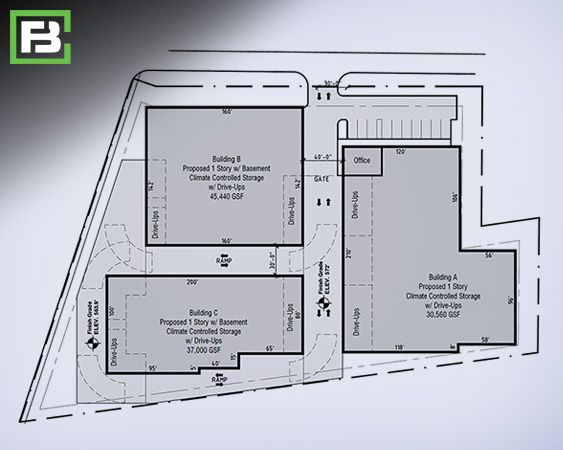 Before ground can be broken on your self storage project, the site plan is a critical piece of the equation that will be used for the review and approval process by the planning department in your municipality. The planning department will review the site plan to ensure it adheres to all applicable ordinances and development standards.
Before ground can be broken on your self storage project, the site plan is a critical piece of the equation that will be used for the review and approval process by the planning department in your municipality. The planning department will review the site plan to ensure it adheres to all applicable ordinances and development standards.
The site plan also serves as a common operating picture and project roadmap for the development team. Capturing all major elements including site engineering and construction elements in a single plan will serve to keep the efforts of the engineers, architects, general contractors, and developers aligned. It will also help with project budgeting and provide the entire team with the elements needed to make informed decisions.
The site plan will provide you with a visual representation of your vision for your self storage facility. Seeing your vision on paper (or screen) will enable you to have a clearer understanding of what you are trying to achieve. This also provides you with the ability to assess the feasibility of your project and make any adjustments if necessary before going out to investors and lenders. Finally, it provides you with a document that ensures your project stays on course and aligns with your objectives.
Partnering with the experts at Forge Building Company will help ensure that your vision becomes a reality. When drafting a site plan, we oversee all aspects of the planning process to ensure that everything is up to standard and exactly how you envision it.
When creating your site plan, there are several elements that should be included2.
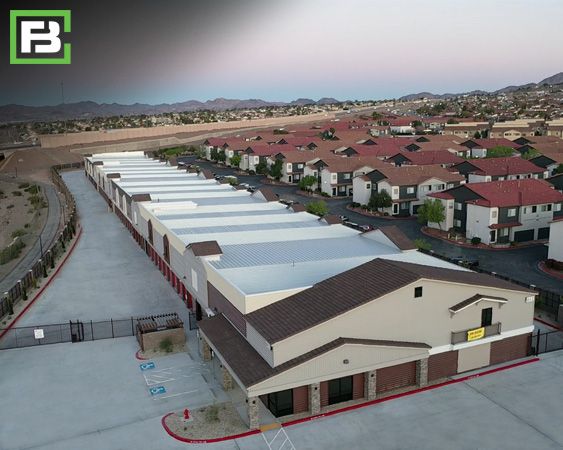
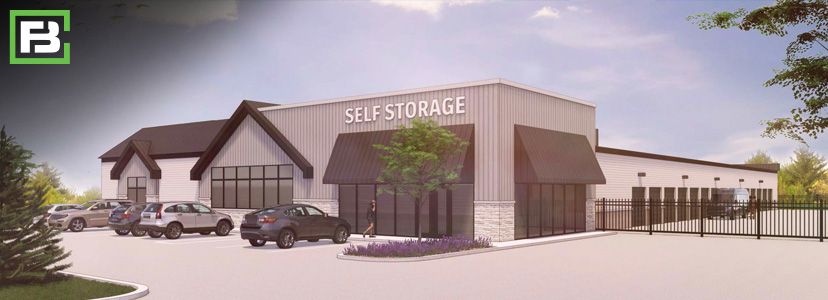
When you choose to work with the steel building experts at Forge Building Company, you can rest assured that all your site planning needs will be taken care of. Our team of experts will provide strategic plans that maximize space, improve your facility’s functionality, and increase efficiency.
Secondly, entrusting the team at Forge Building Company to complete your conceptual site plan ensures that every detail of your facility will be carefully drawn up and communicated with everyone involved in developing your facility.
Finally, by choosing Forge Building Company for your next project, you will experience firsthand the transformative impact of meticulous planning and years of experience to ensure that every decision you make is the right one.
Reach out to us today to discover how we can bring your vision to reality with precision, efficiency, and unparalleled expertise.
References
1. Hover Architecture. (n.d.). Retrieved from https://hoverarchitecture.com/: https://hoverarchitecture.com/csp/
2. MT Copeland. (2020, June 30). Retrieved from mtcopeland.com: https://mtcopeland.com/blog/what-is-a-site-plan-11-things-good-site-plans-must-include/
When developing a self storage facility, numerous decisions influence the project’s success and profitability. One critical decision is whether to build a single-story or multi-story self storage facility. For investors and developers, understanding the factors that make a multi-story facility advantageous is essential for maximizing return on investment (ROI). This blog explores the key considerations that may favor the construction of a multi-story self storage facility over a single-story one.
The location of the parcel plays a crucial role in determining whether a multi-story facility is feasible. In metropolitan areas where land prices are steep, maximizing the use of vertical space becomes necessary to justify the high land acquisition costs. For instance, purchasing five acres in a rural area might cost the same as acquiring one acre in a metropolitan area due to supply-demand dynamics and population density.
Metropolitan areas often face scarcity in undeveloped land parcels suitable for large-scale commercial projects like self storage facilities. This scarcity drives up land prices and necessitates, resulting in the need for innovative solutions to maximize usable space. In contrast, rural areas may offer more expansive land options at lower costs, making single-story developments financially viable unless land restrictions or zoning regulations favor multi-story constructions.
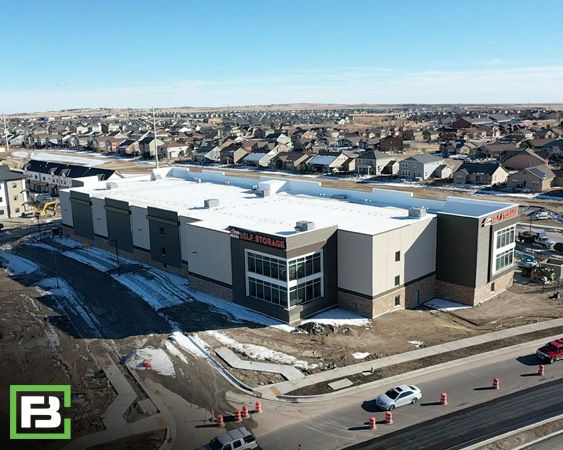 Navigating municipality regulations is crucial for any development project, particularly for multi-story facilities. The Authority Having Jurisdiction (AHJ), typically managed through a Planning and Zoning Department, dictates what can be built on a specific parcel of land. Regulations often include restrictions on building height, setback requirements, fire safety standards, and environmental considerations.
Navigating municipality regulations is crucial for any development project, particularly for multi-story facilities. The Authority Having Jurisdiction (AHJ), typically managed through a Planning and Zoning Department, dictates what can be built on a specific parcel of land. Regulations often include restrictions on building height, setback requirements, fire safety standards, and environmental considerations.
In urban settings, zoning laws may favor vertical development to accommodate population density while maintaining urban aesthetics and infrastructure capacities. Compliance with these regulations ensures that the facility meets safety standards and operational requirements, which may include provisions for parking, access roads, and utility connections.
The physical characteristics of the land parcel influence construction feasibility and costs. Easements, setbacks, wetlands, and uneven terrain can limit the buildable area or necessitate creative design solutions for multi-story structures. Steep elevations, for example, may allow for bi-level (under/over) designs that utilize the natural slope of the land, reducing the need for costly excavation or elevator installations.
Moreover, land parcels with strategic advantages such as proximity to transportation hubs or high-density residential areas can enhance the viability of a multi-story self storage facility. By optimizing land use through innovative architectural and engineering solutions, developers can mitigate construction challenges and capitalize on unique site attributes.
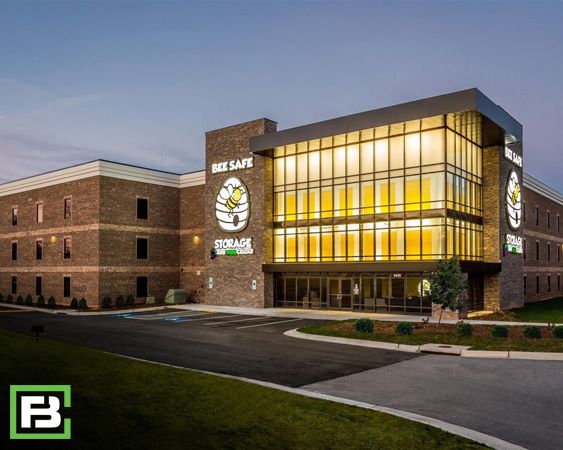
Conducting a comprehensive market feasibility study is essential for evaluating the demand and competitive landscape of the self storage market in a specific location. Factors such as population demographics, existing storage facilities, rental rates, and consumer preferences provide critical insights into market dynamics.
In densely populated urban areas, high demand for storage solutions coupled with limited available space often justifies the higher construction costs associated with multi-story facilities. The study helps investors determine whether the anticipated rental income and occupancy rates justify the additional investment required for vertical construction.
Building a multi-story self storage facility entails higher initial costs compared to single-story constructions. Factors contributing to increased costs include structural reinforcements, elevator installations, stairwells, enhanced security systems, and compliance with building codes and regulations.
Securing adequate financing is paramount to successfully executing a multi-story project within budgetary constraints. Investors may explore various funding options, including commercial loans, private equity partnerships, or crowdfunding, tailored to the project’s scale and financial projections. Proper budgeting and financial planning ensure that the project remains economically viable throughout the construction and operational phases.
Beyond immediate financial considerations, the sustainability and long-term return on investment (ROI) of a multi-story self storage facility depend on operational efficiency, market resilience, and adaptive management practices. Sustainable building designs, energy-efficient systems, and environmentally responsible practices contribute to reducing operational costs and enhancing asset value over time.
Moreover, strategic asset management, tenant retention strategies, and responsive customer service are critical for maintaining high occupancy rates and revenue streams. Investing in technology-driven solutions for facility management and security enhances operational efficiency and customer satisfaction, positioning the facility competitively in the marketplace.
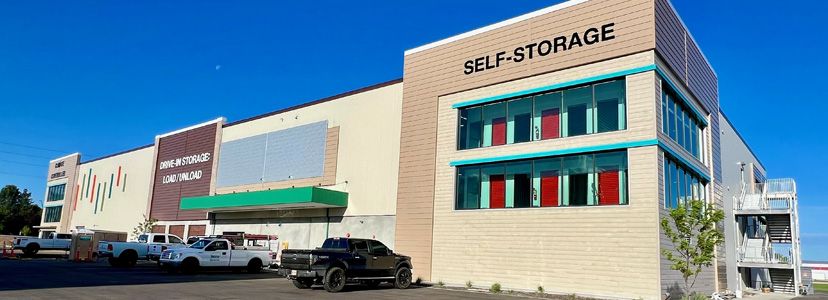
In conclusion, the decision to build a multi-story self storage facility hinges on a complex interplay of location dynamics, regulatory compliance, land constraints, market demand, budget considerations, and long-term investment objectives. While the initial costs and logistical challenges of vertical construction may appear daunting, the potential benefits in maximizing land use efficiency and meeting urban storage demand justify the strategic investment for many developers and investors.
Working with the team at Forge, the steel building experts, will help make this process less daunting. Forge has a team of dedicated professionals committed to excellence in planning, design, engineering, construction, and project management.
Through strategic planning and prudent decision-making, developers can navigate challenges and capitalize on opportunities to create successful multi-story self storage facilities that deliver value to investors, tenants, and the community alike.
When you choose Forge, you are choosing quality, reliability, and innovation every step of the way. With the company’s proven track record of delivering superior results, you can trust Forge Building Company to bring your vision to life with precision, efficiency, and unmatched expertise. Contact us today to discover how we can elevate your next project to new heights and success.
See what Ryan Montoya from Elevate Self Storage has to say about working with the team at Forge:
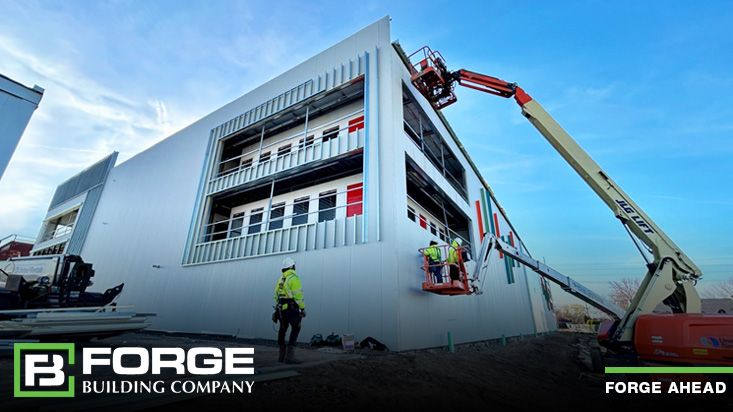
Contributing Editor: Melissa Anderson, Forge Building Company
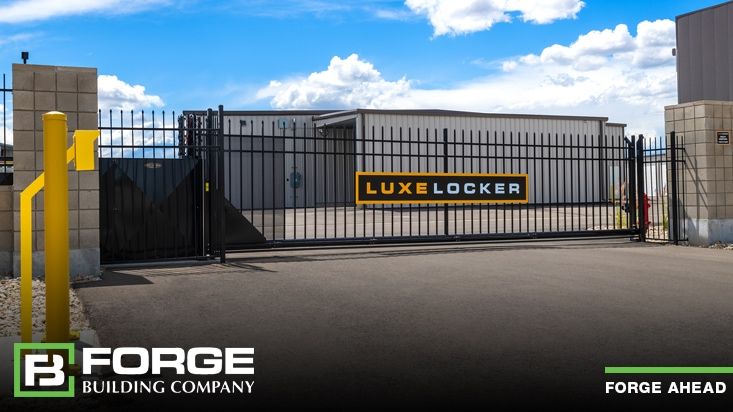
Whether you are building your first self storage facility or own one that you want to upgrade, deciding on what key features you may want to include can be challenging. That’s where the team at Forge Building Company can help. We can work with you to determine upgrades and features that make sense, not just from an aesthetic perspective but financially, for both the short and long term.
When it comes to making physical improvements, you need to be smart. Invest in upgrades that will improve the customer experience and add to your bottom line.
The following are some suggestions and ideas.
So, where do you start? According to Steven Wear of IMPACT Self Storage, when it comes to facility improvements, there’s a return multiple for every dollar of increased net operating income (NOI). Cap rate is calculated by dividing NOI by value or price. If a self-storage property trades at an 8% cap, for every $1 that NOI increases, facility value grows $12.50.
Any upgrades that affect the trading cap rate also result in a return multiple. By improving a property’s class ranking, the cap rate will decrease. If a facility with NOI of $100,000 is improved so someone will buy it at a 7% cap as opposed to 8%, there’s a profit increase of more than $178,000.
When considering value-add projects to include when building or renovating your self-storage facility, any investments that can improve asset class and increase NOI should be prioritized. One example of this would be taking traditional units and converting them into climate-controlled spaces. Facilities that do this often see an increase in rental rates as well as a better class. However, the increased utility expense prevents the owner from capturing 100% of the rate increase, but if there is an overall positive impact on NOI, then it’s a good investment.
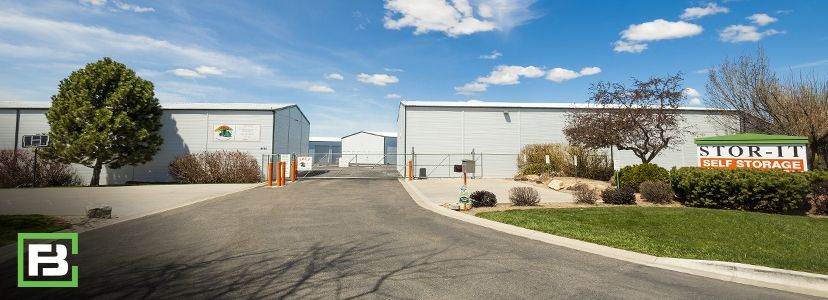
When you think about what features to add to your facility, consider that while paint and landscaping may not necessarily add a lot of value, if a lack of new paint and attractive landscaping results in customers not wanting to rent there, then improving those items will increase NOI.
Many functional items will improve the appearance and offer more benefits than an indirect valuation increase. Two of these, for example, include paving and fencing. Many times, our customers run into self-storage loans that have physical requirements. For instance, commercial mortgage-backed securities loans have some of the most favorable market terms but usually require a facility to be paved and fenced.
Does adding or upgrading your facility with sustainable improvements make financial sense? Typically, when self storage units have been in operation for a while, there are usually many ways to improve their sustainability and energy efficiency that will add to the profitability of the facility.
When trying to sort this out when you are looking to remodel an existing facility or build a new one, consider partnering with a steel building contractor, such as Forge Building Company. We have over 15 years of experience building energy-efficient structures. We use low-energy lighting but without compromising on items such as a high-quality, modern HVAC system.
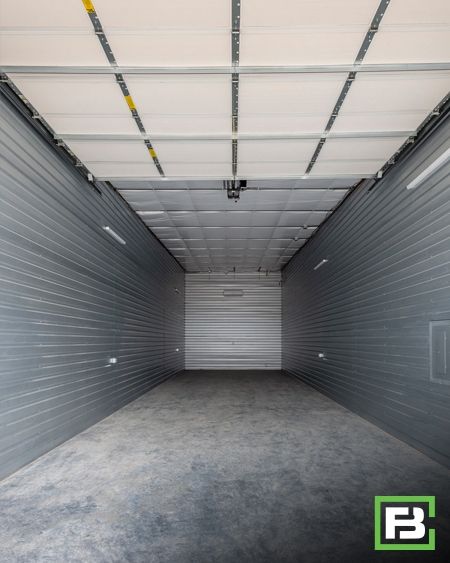 Many self-storage facilities are constructed of steel, which is already very durable. With Forge, being a steel building expert, we use Galvalume in the buildings we erect. This is a proprietary coated steel, that prevents corrosion and deterioration that could result in a compromised building envelope and energy leaks. We also highly recommend that the insulation is sufficient to regulate unit temperature. Rigid foam insulation infused with non-toxic borates is a great solution that also discourages pests.
Many self-storage facilities are constructed of steel, which is already very durable. With Forge, being a steel building expert, we use Galvalume in the buildings we erect. This is a proprietary coated steel, that prevents corrosion and deterioration that could result in a compromised building envelope and energy leaks. We also highly recommend that the insulation is sufficient to regulate unit temperature. Rigid foam insulation infused with non-toxic borates is a great solution that also discourages pests.
Solar panels or efficient roofing, such as the standing seam roof panels used by Forge, is another benefit to steel construction. Roof coatings with a high percentage of infrared reflectants help maintain a more stable building temperature. A “cool” finish can reduce surface temperature by up to 38 degrees and save on energy costs by about 23%.2
Retrofitting energy-efficient lights is another great way to reduce electricity consumption. Alternatively, consider fitting larger lights with a motion sensor, so they either dim or turn off completely when there’s no activity. While installing LED lights or sensor switches might seem tedious on the surface, they will be much cheaper to run and maintain in the long run.
Lower energy use isn’t only sustainable, it creates economic savings for business owners and customers.
For other sustainable improvements to consider, see our blog titled, “Sustainability in Self Storage Facility Renovation and Projects to Consider.”
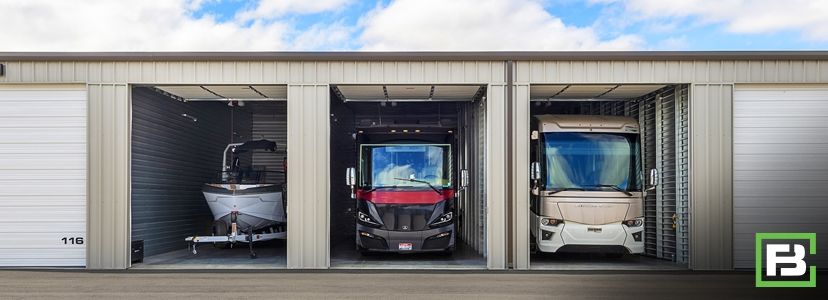
With the explosive growth in the boat and recreational vehicle (RV) market, adding boat and RV storage may boost your bottom line quickly if your market warrants it. And there are many options when adding this type of storage from open canopies to storage condos.
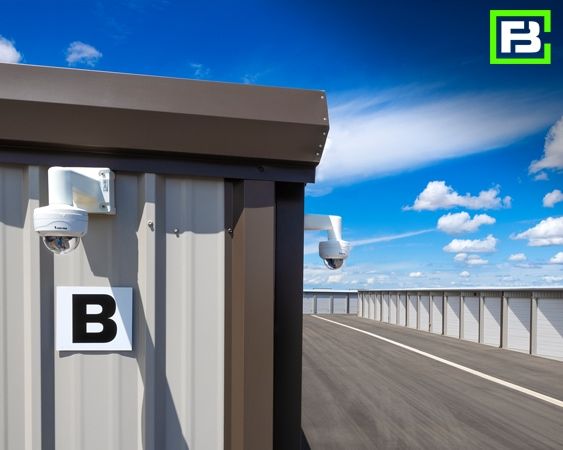
With storage condos, many of these facilities are adding fire sprinklers, electrical outlets, fluorescent lighting, and individual door alarms. Many also offer 24-hour access with alarm monitoring and 24-hour video protection. The large sectional doors are sealed on all four sides. Driveways are 56 feet wide to allow easy parking of these large vehicles. Many of the storage condo buildings are plumbed for water so customers can wash vehicles in front of their units before storing them. And many offer an RV-waste dump and separate bathrooms with showers for men and women.
Many of these types of facilities are creating a new culture where the owners of these “toys” come to store their vehicles and then end up hanging out for the evening.
Facility improvements aren’t just about increasing value and immediately adding to your bottom line; they're also about maintaining it. So, weigh your options carefully and invest wisely. Forge Building Company welcomes the opportunity to help you choose value-added features and projects based on how positively they affect the asset from a financial point of view. Let’s connect.
Works Cited
1 Wear, S. (2021, September 25). Inside Self Storage. Retrieved from Insideselfstorage.com: https://www.insideselfstorage.com/facility-value/value-add-projects-self-storage-making-smart-upgrades-yield-positive-return
2 Barnard, J. (2018, September 14). Retrieved from Inside Self-Storage: https://www.insideselfstorage.com/eco-friendly-storage/differentiation-through-sustainability-green-ideas-self-storage
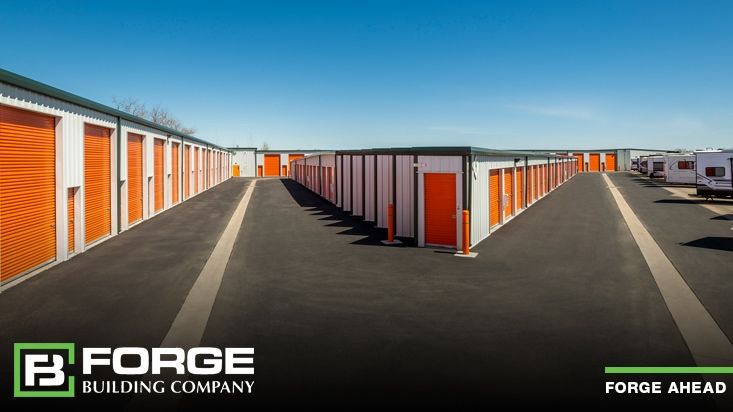
Let’s face it, the self storage industry, which continues to see amazing growth, has come a long way. According to Mordor Intelligence Research, the valuation of the self storage market reached $87.65 billion USD in 2019. By 2025, that valuation is expected to grow to $115.62 billion. This puts the compound annual growth rate (CAGR) at 134.79% over the forecast period of 2020-2025.1
More and more, today’s different types of self-storage facilities are being built with an increasing emphasis on design and amenities, as well as security and convenience. Regardless of what you need to store, there is likely a spot that will provide the space you need with a few bells and whistles, too. As the industry has grown and continues to grow, so has the value associated with this type of investment.
And for the savvy investor, there are now more options than ever - from the traditional drive-up units to multi-story buildings to climate-controlled spaces to converting an office or big box store to building storage condos for boats and RVs. There are a wide variety of self storage options to choose from depending on your budget, location, and needs within the community in which you intend on building.
To see the types of projects Forge is involved with, see:
Let’s explore each option.
The traditional drive-up self storage facility typically offers outside drive-up storage. These warehouse type of units typically charge by the month and provide wide driveways for trucks to unload belongings into individual units. The interior spaces range in dimensions from 100 square feet up to hundreds of thousands of square feet.
This type of facility works well in communities where customers want to store and organize their belongings in a safe, clean place with easy access to their goods. These types of storage units provide the highest level of convenience and work best in a community where people want to load or unload their goods as quickly as possible. They are a great option where land is plentiful enough to create drive-up pathways.
These types of units typically do not offer climate-control options.
For an example of a traditional drive-up facility built by Forge Building Company, see Wise Space Storage | Boise, ID.
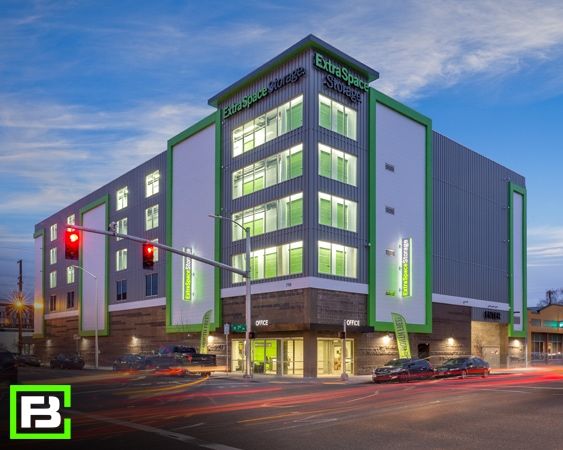 Multi-Story
Multi-StoryMulti-story self-storage is great for when land space is limited. These are also ideal for the investor wanting to add climate-control options. Some may contain drive up options for the lower levels, then climate-control options for the upper levels.
Climate-controlled self storage is a great option in areas of the country that experience extreme heat or cold temperatures and/or that experience high humidity. These units are great for your customers storing furniture, antiques, artwork, and other items where the climate needs to be controlled to avoid moisture buildup and mold prevention.
For more information on whether or not climate-controlled self storage is worth the investment, see our blog titled, “Is Climate-Controlled Self Storage Worth the Investment?” and for an example of a Forge Building Company climate-controlled storage facility build, see: Kuna Caves Storage
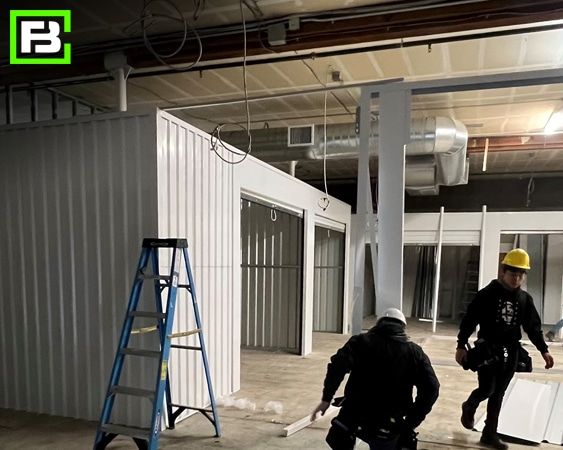 Conversions
ConversionsWith the recent pandemic and decline in big-box retail, there is now a significant inventory of vacant buildings out there for sale. With the current trend of office vacancy rates increasing, building owners are seeking creative ways to make that empty space generate profit again. As such, some are converting these structures into self storage facilities or selling them to others who wish to do so. These buildings can be converted into climate-controlled units or more traditional drive-up units depending upon the building, location, etc.
While this development path can be an efficient time and cost-saver, there are important considerations. These are addressed in our blog titled, “Converting Office and Big-Box Retail Buildings to Self Storage.”
Americans love to travel and have been purchasing RVs and boats for years. According to numbers shown from industry trade groups and places like Statistica 2, Camper FAQs 3, and Go Rving 4, growth in ownership and usage of RVs and boats is growing.
The RV industry alone has seen consistent growth every year since 2009, and with the popularity of van life coupled with the pandemic, there was a huge spike in Gen-Z and millennial RV owners that wanted to travel and have recreational experiences without crowds. Many also found that they could work from remote locations, which meant they could live in RVs and work, not just use them for travel. This helped the outdoor recreation industry to reach close to a trillion dollars.
There are many factors to indicate that the storage condo business is worth the investment, including local market conditions. Many areas of the country suffer from a lack of vehicle storage or places where boats and RVs can be stored securely. There are currently over 25,000,000 boat and RV owners with another 9,000,000 expected to join the market in the next 3 years. Economic and social trends indicate that this is likely to continue throughout 2023 and beyond. As the sales of RVs and boats increase, the demand to store these vehicles is also likely to grow. Traditional self storage facilities have limited space and amenities to store RVs and boats, which means that demand for RV/boat condos will likely grow as RV and boat sales rise.
Owners of other types of vehicles, such as collectible and antique cars, motorcycles, and commercial vehicles, may also be in the market for storage condos. Owners of all these vehicle types will not only want a unit for storage, but for maintenance and light repairs as well – a secure place where they can pursue their hobby.
For more information on where this segment of self storage is heading, see our blog titled, “Where is Boat and RV Storage Headed?” and for an example of a Forge Building Company Storage Condo development, see: Luxe Locker.
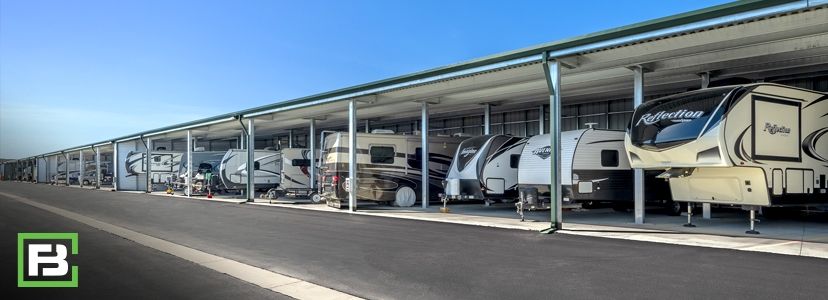
There are many perks that investors look forward to when owning a self storage facility.
Consistent Demand
From boat & RV condos to small units that accommodate a few moving boxes, there is generally a reliable level of demand for this type of commercial real estate. Finding and/or building the facility that is right for your budget and location is key.
What’s more, self storage businesses can usually weather the storm of an economic downturn or recession. When people are forced to downsize or move, self storage becomes a valuable option.
On the other hand, when the economy is strong, people are more likely to buy things or pursue home renovations that require temporary furniture storage.
Flexible Management Options
In comparison to other types of businesses, interaction with customers is usually minimal. Facility owners may choose to have a small team, but it’s not uncommon for a single person to run this type of business.
Aside from providing tours and signing contracts, it usually isn’t necessary to always have someone on the premises. Once a contract is signed, tenants have access to their unit and can make automatic payments each month. As an investor or facility owner, you can be as involved as you want to be.
Opportunities for Additional Revenue
The base rent for your storage units will be your main source of income, but many self storage locations offer a variety of other products and services to generate more revenue.
In addition to selling moving and storage supplies, such as boxes and packing materials, many storage businesses partner up with other companies to offer truck, trailer, and van rentals.
Low Maintenance Costs
Self storage is very low maintenance. Aside from proper lighting, security, and landscaping, there isn’t much to tend to. Common areas should be clean and well-maintained, but there’s no reason to invest in extensive decor.5
Choosing the right self storage investment option will depend on your location and its market, budget, and demand. The team at Forge Building Company is happy to help you through the entire process. Just give us a call.
Works Cited
1. Meyers, S. (2020, December 1). Forbes. Retrieved from Forbes.com: https://www.forbes.com/sites/forbesrealestatecouncil/2020/12/01/a-look-at-self-storage-growth-trends-now-and-post-pandemic/?sh=79758c022165
2. Statista. (2022, December 9). Retrieved from Statista.com: https://www.statista.com/statistics/1155988/us-recreational-boating-vessels/
3. Camper FAQs. (2023). Retrieved from Camperfaqs.com: https://camperfaqs.com/rv-statistics-trends-facts
4. Go Rving. (2022, June 16). Retrieved from gorving.com: https://www.gorving.com/newsroom/rv-industry-association-manufacturing-statistics
5. Mizes, B. (2023, January 5). CREXI. Retrieved from Commercial Real Estate Exchange, Inc.: https://www.crexi.com/insights/8-pros-and-cons-of-investing-in-self-storage?g_acctid=166-395-
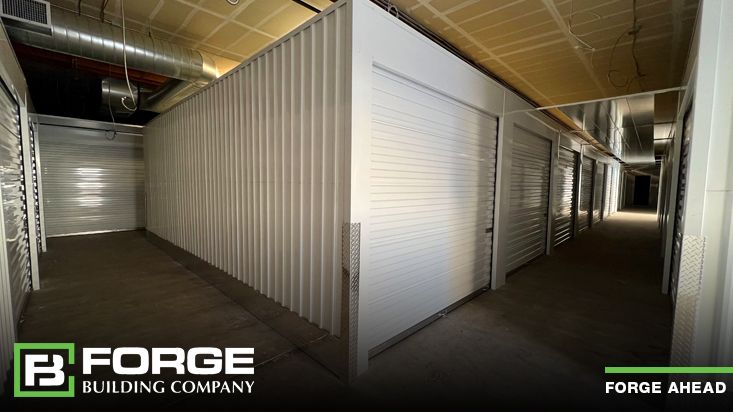
With the recent pandemic and decline in big-box retail, there is now a significant inventory of vacant buildings out there for sale. The current trend of office vacancy rates increasing, building owners are seeking creative ways to make that empty space generate profit again. As such, some are converting these structures into self-storage facilities or selling them to others who wish to do so.
While this development path can be an efficient time and cost-saver, there are important considerations. This blog will help you decide if conversion of an existing building is the right path for you to be able to properly transform a structure into a well-built self storage facility.
Like any building project, there are definitely pros and cons to consider for conversions of existing buildings into a self storage facility. Here’s our take.
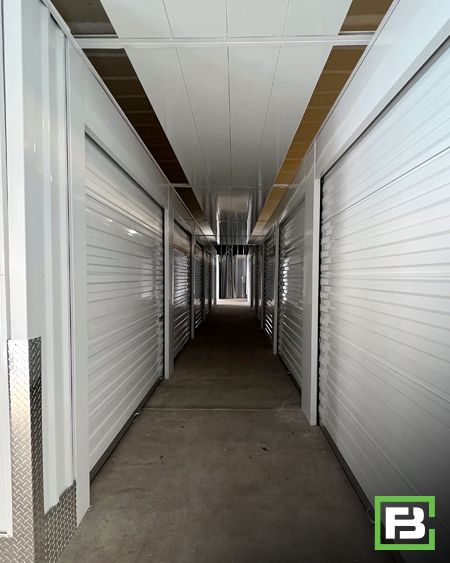 Pros. Because of the amount of inventory out there, you may be able to purchase an existing building for less than it would cost to build it, so after completing the renovation, you’ll have a lower cost basis for your project. Another advantage is that if you maintain the footprint, access points, and site circulation, you may also be able to avoid going through the site-plan approval process with the city, which can save money and simplify entitlements. These advantages add up to an expedited construction schedule at a lower cost.
Pros. Because of the amount of inventory out there, you may be able to purchase an existing building for less than it would cost to build it, so after completing the renovation, you’ll have a lower cost basis for your project. Another advantage is that if you maintain the footprint, access points, and site circulation, you may also be able to avoid going through the site-plan approval process with the city, which can save money and simplify entitlements. These advantages add up to an expedited construction schedule at a lower cost.
Cons. On the flip side, since the structure wasn’t originally built with self storage in mind, it may not always be located in an optimal location for visibility. In addition, the design needs to adapt the building can cause irregular unit sizes and long travel distances from loading areas to units. One other consideration is zoning. This can be a problem since many vacant buildings in commercial zones don’t allow for self storage. Finally, it is important to assess the acquisition price and building condition against all the costs of the conversion and anticipated profits down the road to determine if conversion is the right business strategy.
Along with the pros and cons mentioned above, following are some other considerations.
For any self storage building project, whether it’s a conversion or one being built from the ground up, your site selection is the number one consideration. Retail-like visibility is always preferable to being out of sight. No amount of online marketing can replace the free exposure of being located along a frequently driven, high-traffic route. Proximity to potential customers is key.
One of the most restrictive challenges in pursuing a conversion project is finding a building where self storage is permitted. Thankfully, many jurisdictions appreciate creative solutions to filling empty structures. A zoning authority that has a positive view of storage as a community-serving use will aid your cause; however, if storage is still considered an industrial use that should remain on the periphery of communities, your development path is going to be all uphill, costing excessive time and money.1
As in any type of self storage build, it is critical to understand rates, occupancies, and the competitors around you. The team at Forge always recommends that a complete and thorough market study be completed. It is also key to investigate whether or not self storage is allowed in the zone where the building is located. If it is, then you may need a conditional-use permit or rezoning permit.
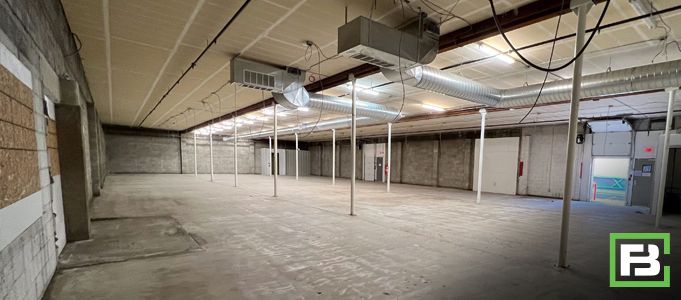
Old Idaho Statesmen Building Before Conversion to Self Storage
Forge also always recommends that you check the title and survey to determine if there are covenants, conditions, and restrictions, easements, and other agreements that could impact your ability to convert the building. It’s common, especially with retail properties, to have private restrictions that prohibit self storage, easements that impact circulation, common-area maintenance fees, shared utilities, etc. Environmental problems are also common, especially in older manufacturing and warehouse facilities. Thoroughly understanding your site and its history is a key part of having a successful project.
When looking at starting a conversion project, typically a commercial zone 2 (C-2) location is the most desirable in a market area. It will typically have a large and destination-bound traffic count and great visibility. In addition, facilities in C-2 typically rent up faster than those in light industrial 1 (I-1).2
It is also good to eliminate any potential site that cannot accommodate a minimum of 50,000 net rentable feet. This is typically optimal for cost-efficient management.
Once you have your site selected, you will need to assess the structure itself – the roof, structure, parking lot, mechanical, etc. In addition, many old buildings have refrigeration systems and other items that are costly to remove. Asbestos, and other hazardous materials remediation may also need to be addressed.
Floor load. If the building you are looking to convert is a multi-story building or has a mezzanine, it is key to ensure the floor load is adequate for self storage use.3 One of the most significant costs in the conversion of office space to self storage will be the assessment and likely remediation of the structural system. Most office buildings have been designed and constructed with a much lower live load than what’s required for self storage, often rated for 50 to 80 pounds load per square foot (PSF) compared to 125. That’s about a 50 percent deficit.
To help you calculate the loading design, it is key to do field measurements with limited destructive testing and a structural engineer. (See our blog titled, “Designing a Self Storage Facility – How to Select Your Design Team”)
If the structural engineer finds that the structure doesn’t meet the required loading for self storage, there are still solutions. Adding light-gauge bearing walls is the most cost-effective, while reinforcing existing beams could also be sufficient. Reinforcing under-bar joists is the costliest solution.
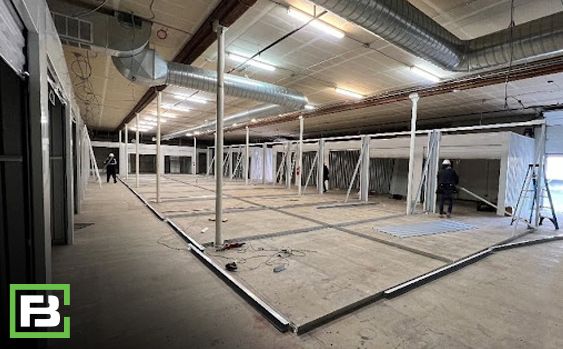
Old Idaho Statesmen Building During Conversion to Self Storage
Rentable Space. Most urban and suburban self storage facilities are 100,000 to 120,000 gross square feet. However, taking into account elevators, stairs, and corridors may reduce the rentable yield to 75,000 to 90,000 square feet. It’s key to know what amount of rentable square footage is necessary to be profitable.
Another consideration you will need to make in this same area of the design, is the average unit size and mix.
In a standard conversion, you’ll use the existing building without changing the overall footprint. This is the easiest, most straightforward type of project. Depending on the building, it is also common to add one or more floors in the existing footprint.
Increasing the rentable square footage of the building through a footprint expansion or the addition of more structures can be another great option. This may include adding drive-up units or vehicle storage in the rear or side of the building.
At the end of the day, the design of your conversion will play a significant role in its success.
Thermal envelope. Energy-code compliance has only been around since 2012. Therefore, the level of renovation necessary will depend on the existing wall, slab, and roof.
Elevators. Check to see if the existing elevators are in your tenant loading/unloading area. A self storage elevator should have a 4,500-pound capacity with a taller cab to accommodate large pieces of furniture.
Loading area. An appropriately sized loading and unloading area with ample space to maneuver large vehicles, such as moving trucks, is key. Your loading area should have a minimal vertical clearance of 14 feet. It should also be convenient to the building interior, particularly the elevator.
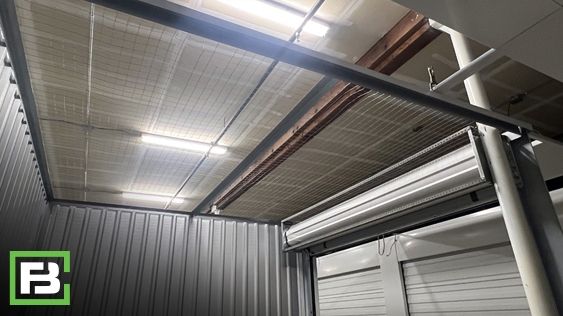
Old Idaho Statesmen Building After Conversion to Self Storage
Self storage has some of the easiest mechanical systems of any real estate type. In the case of an office conversion, the goal is to minimize replacement. The preferred self storage HVAC system is a residential-sized split system with minimal to no ductwork. Boilers and other perimeter unit systems lack efficiency.
A sprinkler system will likely be a code requirement for self storage structures of 100,000 square feet or more. If your building has such a system already, the upgrades should be minimal. The large open areas with no ceilings allow for an optimized sprinkler-head layout.
The last item to evaluate is the electrical system. Typically, the system already in place is likely to be sufficient to meet your self storage needs, but plan to replace the lighting to more energy-efficient LEDs with motion sensors.
The exterior look of the building is key, especially to potential customers driving by. That’s why it is key that your building stands out. Fresh paint, clear, visible signage and nice landscaping increase the curb appeal.
The building-conversion process always comes with extra surprises. Therefore, it’s important to carefully select a professional design and construction team with self storage experience such as Forge Building Company (see our blog titled, “Designing a Self Storage Facility – How to Select Your Design Team”).
Self storage conversions are a great alternative to ground-up development. Evaluating the site, assessing the building, designing the project, and understanding the costs will provide you the information you need to make a wise decision. Finding one that meets the criteria for self storage with limited need for remediation can be a tricky, so working with the team at Forge Building Company can make the process much easier. The budget savings of building a self story facility from a conversion can be 25% to 50%. Give the team at Forge a call today, we would love to help you convert an existing building.
Works Cited
1. Brown, R. (2023, March 22). Inside Self Storage. Retrieved from Insideselfstorage.com: https://www.insideselfstorage.com/conversions/converting-old-office-buildings-outstanding-self-storage-facilities
2. Pollack, L. (2012, July 20). Inside Self Storage. Retrieved from Insideselfstorage.com: https://www.insideselfstorage.com/conversions/retrofitting-building-your-dream-self-storage-facility-guide-intrepid-souls
3. Wyckoff, S. (2021, January 21). Inside Self Storage. Retrieved from Insideselfstorage.com: https://www.insideselfstorage.com/conversions/self-storage-conversion-projects-pros-and-cons-building-assessment-design-pitfalls-and
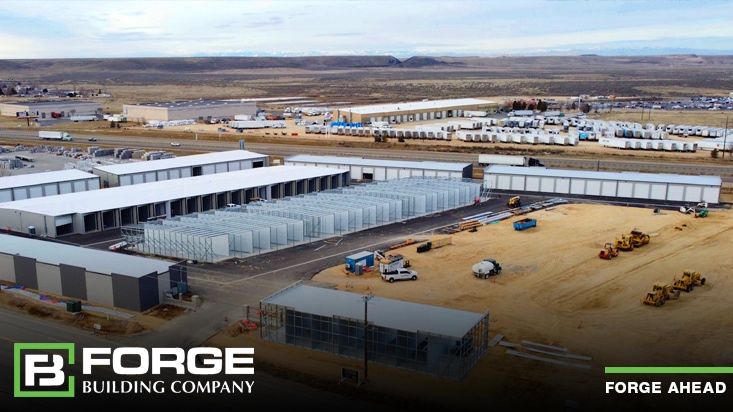
Designing and developing a profitable self storage facility requires much more than picking the perfect location and unit mix. The vendors you select and the team you work with can impact decision making and impact the bottom line.
In the early years of self-storage, many facilities simply consisted of single-story, garage-style structures built from a flat slab with concrete block walls and simple wood-truss roofs. Today, with a scarcity of available land, many self-storage owners and investors are building multi-story units that are climate controlled and energy efficient. Materials being used are very different as are the requirements for new construction and building codes, especially those mandated by new standards of energy efficiency.
However, before you build or start down the design planning road, it is imperative that you engage a company to do a market feasibility study. This is a critical first step since most investors and developers want to know if the property will be profitable before going into the design phase.
Once your market feasibility study is complete, the Forge team will provide a complimentary site layout in this preliminary phase of the project. This site layout can then be turned into AutoCAD drawings so the architectural team can make any necessary updates and incorporate these into the architectural set of drawings (see below).
So, who are the key players you will need in your design team? Below we outline the major vendors and how they will contribute to the development of the most aesthetically pleasing, profitable, and cost-effective self-storage facility.
Now that you know who the players are, the next question is how do you choose the right companies to provide these services? Just like with many service-oriented businesses you’ll want to choose a business that has a solid reputation, comes from a referral, or meets your expectations with initial interactions. Beyond the basics of choosing a “good” company to work with there are some key attributes specifically for the architect, structural engineer, and civil engineer that you want to take into consideration.
First, it is absolutely critical to select an architect and structural engineer that have experience specifically with self storage. There are aspects to self storage that are very different from building a multi-family or commercial development. The architect and structural engineer don’t have to be local to the area that you are building in, however, they need to be able to effectively obtain information required in order to communicate with you about your project. It's a little bit of a different situation with the civil engineer.
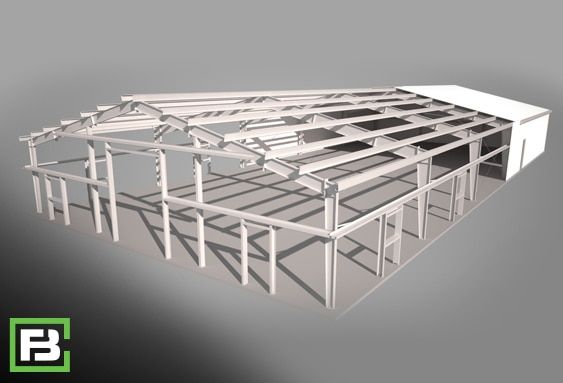
It's a good idea to select a civil engineer that is familiar with the region in which the project is being built. The reason for this is you want the civil engineer to have experience and knowledge specifically with the conditions of the soil within a particular area. Different parts of the county have different types of earth that needs specific considerations. For example, building in the wetlands of Florida is going to vary greatly from building in the dry dessert of Arizona.
Another thing to keep in mind is that these companies should be working collaboratively together. If buildings need to move because of where the retention pond is, then the architect will need to make changes to the layout. If this causes a building size to change, then the structural engineer is going to have to adjust their drawings. So, with these things in mind, make sure that every player has the bandwidth to take on another project. To keep progress moving along, you don’t want anyone held up because one of the team members doesn’t have time.
As you are making selections on your design team, it is a good idea to make your selection on a steel building contractor. Many of these contractors, like Forge Building Company, offer structural engineering as part of their services. The benefit of bringing a steel contractor into the design phase is that it allows them to provide insight on best practices that they have seen over the years, as well as allow them to show where there may be areas to value engineer the project, ultimately saving you money.
When selecting a steel frame building contractor, it is key to work with one that has created custom steel buildings of every shape and size. Here are some questions to ask when making your decision on who to work with:
The right steel building contractor should also be able to provide:
For more considerations, also see our blog “Commercial Steel Building Developers.”
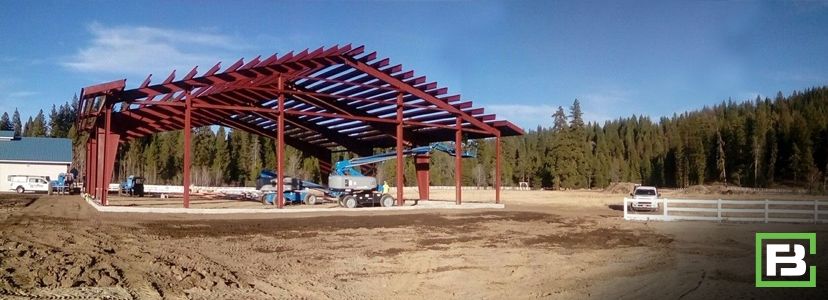
For the last 15 years, Forge Building Company has partnered with investors and developers on over 500 self storage projects. With our experience in this space, Forge can provide all the necessary vendors and information needed for your project to be a success – from start to finish.
Here is how we can help. Forge offers:
Whether you are considering your first or your fiftieth self storage project, we are ready to partner with you. Forge knows self storage and has built over 60 million square feet of it.
To hear more about what our customers are saying about working with Forge as a one-stop shop, see https://www.youtube.com/watch?v=P7WFCRms2kI.
Let’s begin the discussion on your next project. Click here to connect!
Contributing Editor: Melissa Anderson, Forge Building Company

As the year winds down and you look at the overall commercial real estate market, there were definitely challenges – retailers were closing doors, the future of office space is still uncertain, supply chain issues have persisted, and inflation is near 40-year highs prompting the Fed to steadily increase interest rates1. However, there are still bright spots in the commercial real estate market forecast. The one asset class that has outperformed all the others in 2021 was self storage. With an average occupancy of 92%, self storage is a viable option for those looking for alternative investment opportunities as it provides income and inflation resistance (since rates can change daily2.
Also see our blog, "Why Self Storage in a Recession?"
In today’s self storage industry, almost 40% of Americans rent a self storage unit with Gen X leading the other age groups. This segment of the commercial real estate industry is growing tremendously in popularity because it assists people during many key life events – growing your family, downsizing, moving, death, and divorce. Typically, homeowners with smaller homes tend to use self storage more, but the percentage of owners of larger homes is also on the rise3.
The primary reason investors are now looking at this asset class is because it can be an inflation hedge. Most units are on a month-to-month rent, which can increase each month to keep up with inflation. According to the 2023 Self-Storage Almanac, consumers typically rent a 10x10 storage unit. The rent for these units increased by 13% in 2022. In 2001-2023 the average return on self-storage was 20.87%, and in 2006-2021 it was 18.76%. Numbers like this are gaining the attention of investors.
Furthermore, the average sale price of storage properties has appreciated by more than 30% over the past five years4.
See "2022 Outlook for Self Storage."
Also, see what the Forge President and CEO have to say about "Self storage as an investment."
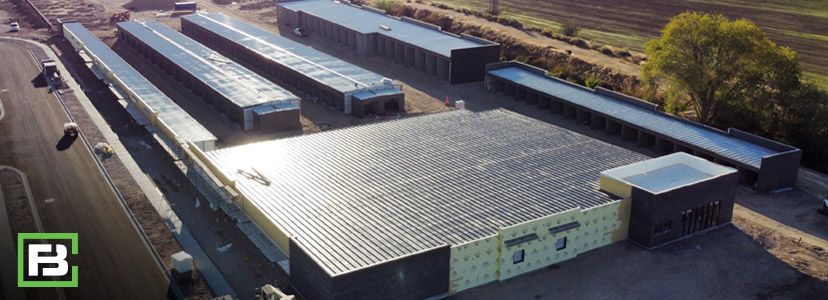
In today’s market, you do not necessarily need to buy and build your own self storage facility. Some companies create self storage turnaround investments that are for accredited investors. These funds tend to buy self-storage units from “mom and pop” operators and add economies of scale, invest in the properties, and increase the return on investment (ROI) for investors.
So, whether an investor wants to buy and own a self storage facility outright or just benefit from the long-term economic benefits, self storage facilities stand to serve both types of investors well5.
1. Brooks, A. (2022, December 2). J.P. Morgan. Retrieved from jpmorgan.com: https://www.jpmorgan.com/insights/outlook/economic-outlook/2023-commercial-real-estate-trends
2. Hubler, F. (2023, September 5). Forbes. Retrieved from Forbes.com: https://www.forbes.com/sites/fredhubler/2023/09/05/self-storage-isnt-just-for-hoarders-a-primer-for-investors/?sh=2e5e810d77be
3. Mohan, M. (2022, August 15). Storage Cafe. Retrieved from storagecafe.com: https://www.storagecafe.com/blog/self-storage-use-and-main-demand-drivers/
4. Weinstock, S. D. (2022, January 15). Inside Self Storage. Retrieved from insideselfstorage.com: https://www.insideselfstorage.com/market-conditions/how-will-self-storage-perform-year-ahead-real-estate-market-outlook-2022
5. Cone, J. (2018, January 11). U.S. News and World Report. Retrieved from money.usnews.com: https://money.usnews.com/money/blogs/the-smarter-mutual-fund-investor/articles/2018-01-11/self-storage-is-an-investment-alternative